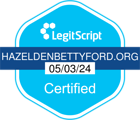Community-Centric Prevention and Early Intervention Solutions

What is Prevention and Early Intervention Support—and Why Does Our Community Need It?
Improving the well-being of our youth, saving lives, ending the current substance use and mental health crises—it all begins with early support in the community. So, what is prevention and early intervention support? We define it as educational conversations that start with children and continue through young adulthood. Because promoting healthy choices starts with increasing protective factors and addressing risk factors now. It also begins with understanding the effective ways to intervene on risky behaviors before they turn into more long-term, increasingly life-threatening problems.

Customized Solutions for Your Community
To continue making positive changes, we need to involve people of all ages in the community—families, caregivers, schools, local organizations and more. Focusing on a whole-community approach puts the power of prevention back in the hands of your community. In turn, healing and hope for the future continues.
But how does Hazelden Betty Ford truly impact your community?
With customized solutions.
Our experts meet your community exactly where it’s at—learning about its distinct history, experiences, strengths, challenges and gaps in current resources. Together, we then create a plan to address each unique need using assessments, resources from within our portfolio and custom training solutions, including:
- Evidence-based and research-informed programs, curricula, services, training and resources
- Virtual and in-person professional development and training
- Multi-year engagement capabilities—to assess, train and provide resources your community can replicate
To us, success means creating a community-focus that overcomes the odds. It means leaving you with the ability to sustain and build on prevention and early intervention plans.
Prevention and Early Intervention Initiatives
Alcohol, Tobacco and Other Drug Prevention
Kickstart and build a substance abuse prevention and early intervention plan in your community by addressing the issues unique to your young people before those issues turn into harmful problems.
Violence Prevention
Empower young people to end the cycle of violence and foster safe environments throughout your community with a comprehensive prevention plan designed to help them live safer, healthier lives.
Mental Health and Well-Being Promotion
Encourage health and wellness with preventative mental health and well-being measures and decrease negative mental health disorder outcomes, including suicide.










